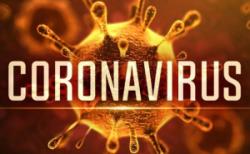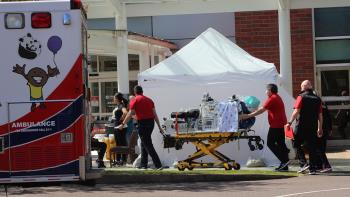 Recent mildly optimistic projections by economists regarding the future are based on the improvement in late May and June characterized by job gains. Dan Kowalski of CoBank has warned that the recovery will be fragile. The July upsurge in COVID-19 incidence following the relaxation of control measures including home confinement and closing of restaurants and retail stores unfortunately confirms that the virus is still with us and will persist. Until the U.S. uniformly adopts realistic and proven methods of suppression of the infection, we will continue to record both rising morbidity and regrettably concurrent mortality. Recent daily totals of 70,000 confirmed incident cases and a cumulative mortality approaching 150,000 confirm the severity of COVID-19.
Recent mildly optimistic projections by economists regarding the future are based on the improvement in late May and June characterized by job gains. Dan Kowalski of CoBank has warned that the recovery will be fragile. The July upsurge in COVID-19 incidence following the relaxation of control measures including home confinement and closing of restaurants and retail stores unfortunately confirms that the virus is still with us and will persist. Until the U.S. uniformly adopts realistic and proven methods of suppression of the infection, we will continue to record both rising morbidity and regrettably concurrent mortality. Recent daily totals of 70,000 confirmed incident cases and a cumulative mortality approaching 150,000 confirm the severity of COVID-19.
The Administration and acknowledged specialist in epidemiology are at odds over the severity and course of the infection resulting in a lack of coordination and effective application of control measures. For the immediate future we could drive down the incidence rate if we wore masks in public, avoided large gatherings, practiced social distancing and donned PPE in factories and plants. We would also have to be supported with an effective testing program yielding results within 24 hours to  allow for quarantine and tracing,
allow for quarantine and tracing,
The expedient of an effective vaccine is not going to be a solution before the summer of 2021. Despite promising Phase-1 trials, producing and administering an effective and safe vaccine that will be adopted by the majority of our population is an elusive goal. Even if effective and assuming no adverse side effects and requiring at least two doses, we probably cannot expect more than a 60 percent compliance rate through 2022. This will leave a significant proportion of our population to be susceptible contributing to persistence of the virus.
Given that COVID-19 is here for the intermediate term, we should review impacts on the egg industry:-
- The food service sector that depends on universities, schools, institutions and corporate dining will only return if COVID-19 is effectively controlled. Restaurant dining will be restricted both from fear of contracting infection and the severe recession (if not a depression) that will persist for years. Although losses in food service will be partly compensated by increased home consumption of eggs, total demand will decline. In 2019 per capita U.S. consumption was 293 eggs. In the current year this will fall to 282 eggs although USDA ERS forecast a slight rise to 285 eggs in 2021. This figure may well be optimistic given the persistence of COVID-19.
- Economists are projecting an unemployment rate ranging from 11 to 22 percent by the end of the year. The wide range indicates uncertainty relating to control and how the disease will affect our economy. Despite the $2.2 trillion distributed under the CARES Act, of which $670 billion was in the form of the Paycheck Protection Program, vast sums denominated in the trillions will still be required to maintain a semblance of normality although creating a burden for future generations.
- An inevitable increases in taxes irrespective of which administration is in office in 2021.
- A marked deterioration in municipal services and an increase in cost as local authorities lose tax revenue through default.
- An erosion of infrastructure including road maintenance, the waterway system and the power grid all of which have direct and indirect implications for egg production
- The disparity between current egg production capacity and predicted demand will reduce prices to a point at which the least efficient in terms of production and marketing will be forced to either consolidate or fail.
- Trained and reliable labor will become progressively more expensive even with high unemployment. Higher levels of mechanization and automation applying robotics will be required to achieve cost efficiency.
- Loan capital for either expansion or conversion from conventional cages to alternative systems will be unavailable despite low interest rates based on concerns over capacity to service debt.
- Given high unemployment and correspondingly low spending even on necessities, concepts such as sustainability and welfare will be superseded by consumers opting for low-cost foods. An inevitable down-cycle in protein consumption will occur from beef to pork to chicken and will ultimately favor eggs based on nutritional value relative to cost and availability.
- Kowalski warns that "economic scars from COVID-19 will be with us until 2030". Accordingly, we will have an industry with fewer hens and producers will have to consolidate to achieve pricing power relative to the supermarket chains that in turn will downsize.
Some of these trends are emerging but have been temporarily obscured by infusion of aid through the federal CARE Act aid. We can neither deny COVID-19 nor expect a miraculous resolution. We have it within our capability to suppress and contain the infection. This will require a concerted national effort with leadership at the highest level coordinating the resources and activities of states, counties and local authorities. Unless we collectively appreciate the severity of the infection and its economic consequences in order to apply science-based solutions, industry and agriculture will suffer with the egg industry severely challenged. Let us face the most likely outcomes and plan accordingly.